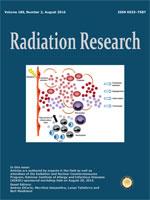Results from our recent studies have led to the novel hypothesis that radiation-induced coagulopathy (RIC) and associated hemorrhage occurring as part of the acute radiation syndrome (ARS) is a major cause of death resulting from radiation exposure in large mammals, including humans. This article contains information related to RIC, as well as potential strategies for the prevention and treatment of RIC. In addition, new findings are reported here on the occurrence of RIC biomarkers in humans exposed to radiation. To determine whether irradiated humans have RIC biomarkers, blood samples were obtained from radiotherapy patients who received treatment for different types of malignancies. Blood samples from allogeneic hematopoietic cell transplantation (allo-HCT) patients obtained before, during and after irradiation indicated that exposure led to prolonged clot formation times, increased levels of thrombin-antithrombin III (TAT) complex and increased circulating nucleosome/histone (cNH) levels, which suggest potential coagulopathies in the allo-HCT patients. Since these allo-HCT patients received chemotherapy prior to radiotherapy, it is possible that the chemical agents could have influenced the observed results. Frozen plasma samples from radiotherapy patients with prostate, lung and breast cancer were also obtained for analyses of cNH levels. The results indicated that some of these patients had very high cNH blood levels. Analysis of cNH levels in plasma samples from irradiated ferrets also indicated increased cNH levels compared to preirradiation baseline levels. The results from irradiated animals and some radiotherapy patients suggest the possibility that anti-histone antibodies, which block the toxic effects of elevated cNH levels in the blood, might be useful as therapeutic agents for adverse biological radiation-induced effects. The detection of increased levels of cNH in some radiotherapy patient blood samples demonstrates its potential as a biomarker for diagnosing and/or predicting the propensity for developing coagulopathies/hemorrhage, offering possible treatment options with personalized medicine therapies for cancer patients.
How to translate text using browser tools
26 July 2016
A Review of Radiation-Induced Coagulopathy and New Findings to Support Potential Prevention Strategies and Treatments
Ann R. Kennedy,
Amit Maity,
Jenine K. Sanzari
ACCESS THE FULL ARTICLE

Radiation Research
Vol. 186 • No. 2
August 2016
Vol. 186 • No. 2
August 2016




